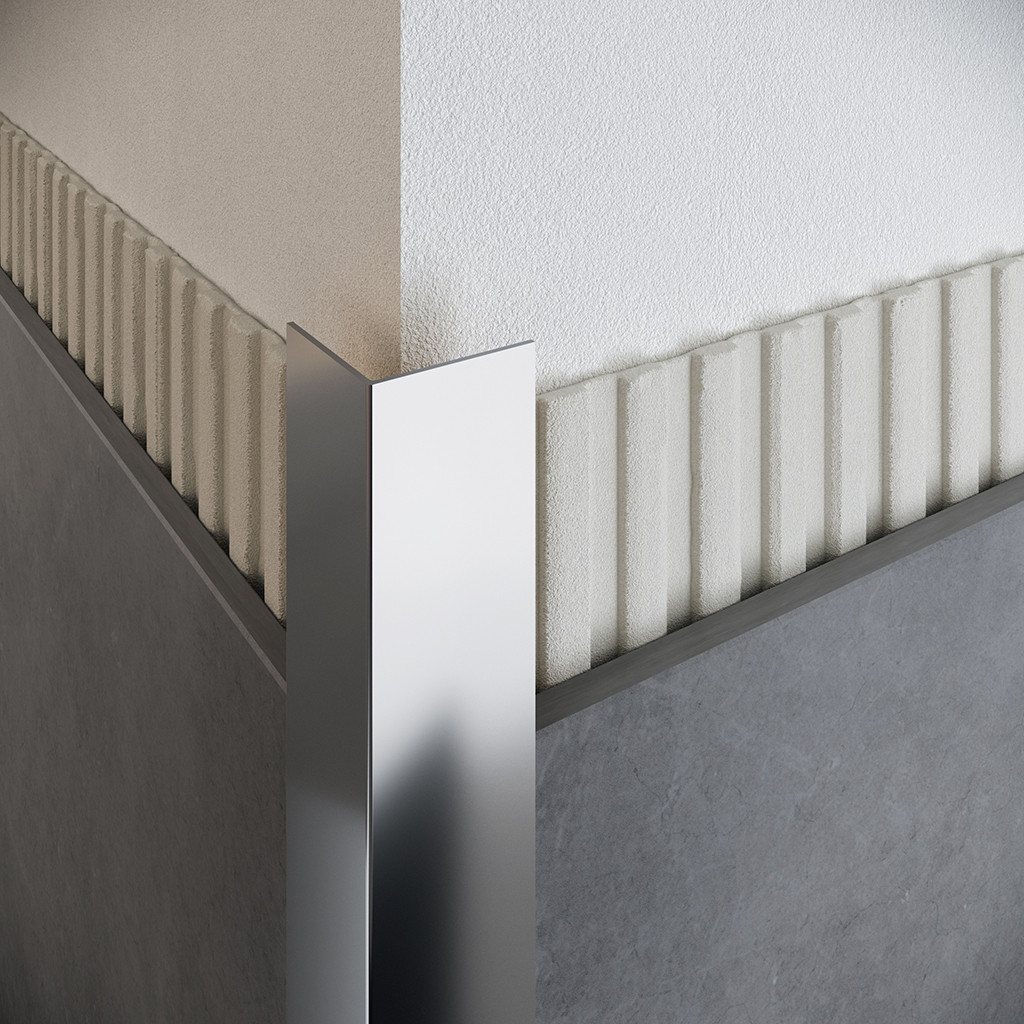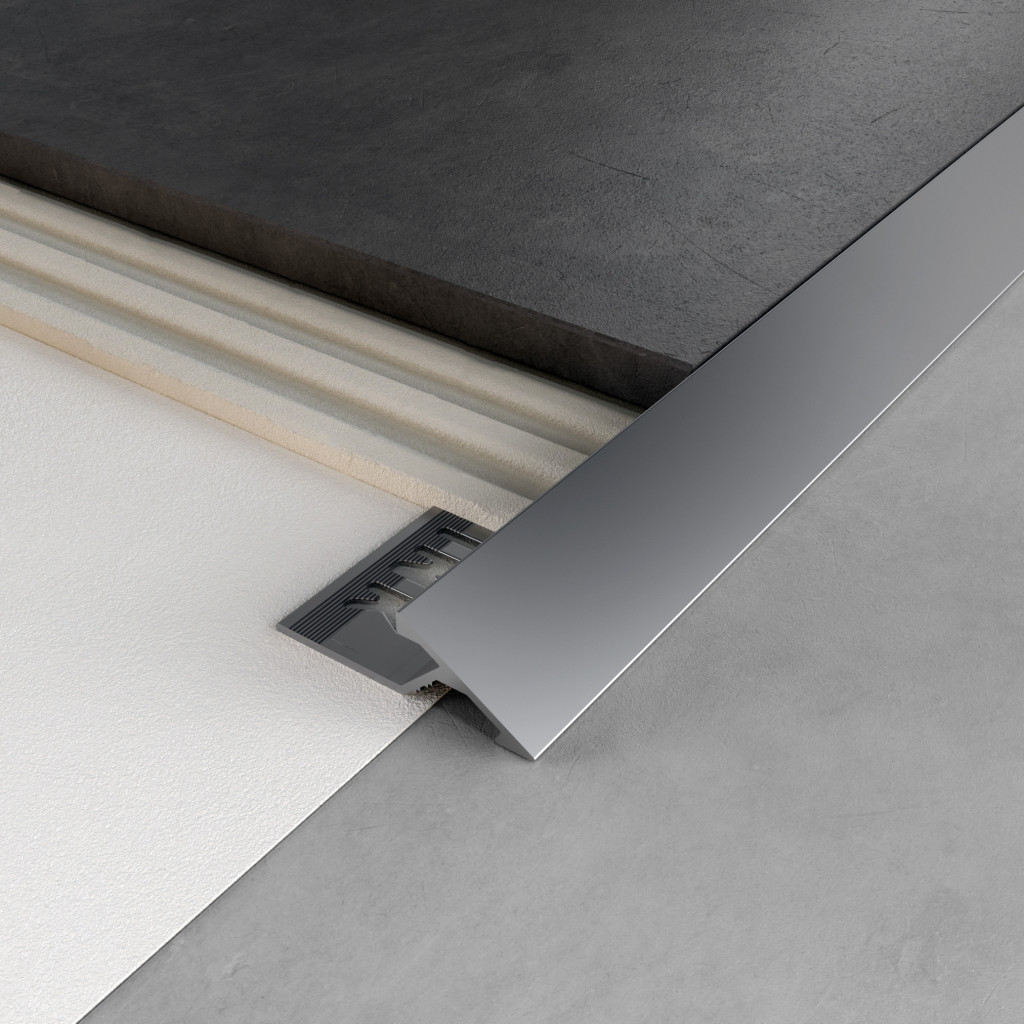

In construction and interior design, even the smallest details can make all the difference. One of these essential yet often overlooked elements is the finishing profile. Choosing the right profile not only enhances the aesthetic of a project, but also ensures its long-term durability, strength and functionality. From floors to walls, and from residential settings to commercial or industrial spaces, profiles are key allies in any architectural intervention.
Profiles protect edges and corners, absorb structural movement, allow for clean transitions between materials and improve the final finish. Beyond structural reinforcement, they help create a polished, professional look. Profiles are essential in areas such as floors, ceilings, walls and built-in furniture. Selecting the right profile can make a major difference in the quality and perception of a project.
Plasterboard, widely used in dry construction systems, requires structural profiles to form the framework for partition walls and suspended ceilings. These profiles provide strength, stability and durability to the system. They are typically in the form of channels and studs that securely support the plaster panels.
In addition to these structural elements, finishing profiles are used to protect edges, corners and joints. They are usually made from aluminium or PVC, materials that resist impact, wear and tear and moisture. They improve the overall visual appearance of the partition, providing a uniform and professional finish.
A standout example is the Eurocorner 193A profile made from anodised aluminium, ideal for external corners. It offers effective impact resistance and a clean, understated finish, perfect for busy spaces or projects seeking low-maintenance solutions with a modern aesthetic.

In ceramics, profiles offer both protection and design value. They are essential for exposed edges, corners, countertop finishes and transitions between materials. They are available in rounded, square or L-shaped formats, and can be found in aluminium, PVC, stainless steel or lacquered finishes.
In wet areas such as bathrooms or kitchens, it is important to use moisture-resistant profiles, such as those made from anodised aluminium or technical PVC, to prevent corrosion and long-term deterioration.
A particularly recommended model is the Euromultipurpose 212, available in both aluminium and PVC. Its design protects edges, finishes ceramic joints and enables smooth transitions between materials. Water-resistant and durable, it is a functional and aesthetic solution for demanding environments.
Vinyl flooring stands out for its durability, ease of maintenance and contemporary appeal. To ensure seamless integration with other materials, it is essential to use transition profiles that provide a clean and secure bond. These profiles also help to prevent lifting or damage to vinyl edges, particularly in high-traffic areas.
In kitchens, bathrooms or wet areas, anodised aluminium or PVC profiles are recommended due to their moisture resistance and durability against cleaning products and frequent use. In addition, their technical finish also helps maintain a uniform aesthetic across the most demanding spaces.
Euroshrink’s Eurotransition 201A profile is a particularly suitable choice for this type of application. Made from high-strength anodised aluminium, it bridges transitions between floors of differing heights, such as vinyl and ceramic, with a secure mechanical fixing. Installed with screws, it ensures firm anchoring—ideal for high-traffic areas. Available in finishes such as matte silver or gold, it integrates easily into various decorative settings, providing a clean, functional and durable finish.
In parquet and laminate flooring installations, profiles play a key role in both the functionality and aesthetics of the final finish. Their main function is to cover expansion joints, create level transitions between surfaces and provide a secure, visually pleasing edge finish.
Parquet profiles are usually available in self-adhesive, snap-on or mechanically fixed versions. Finishes include wood-effect designs or lacquered aluminium finishes, allowing a discreet visual integration with the installed flooring.
The Eurotransition 290A model with its self-adhesive design allows for quick installation without the need for invasive tools, thus protecting the integrity of the flooring. Moisture-resistant and able to accommodate the natural movements of wood, it provides durability and a refined finish even in high-traffic areas.

In spaces where carpeting is used, profiles play a key role in securely fixing the covering. They prevent edges from fraying, ensure material stability and create smooth transitions to other flooring types.
These profiles are typically made from anodised or lacquered aluminium, and are available in self-adhesive, mechanically fixed or press-fit formats. Their use not only prolongs the life of the carpet, but also improves safety in passageways by reducing trip hazards.
The Euromat 268A profile is designed to finish carpets in high-footfall areas. Its anchoring system firmly secures the carpet edge. Its sloped shape allows for a smooth, elegant transition to other materials. Available in various metallic finishes such as silver, gold or bronze, it integrates well into demanding decorative projects.
When working with heavy and resistant materials such as marble, granite or engineered stone, you need profiles that are up to the task in terms of both robustness and aesthetics. These profiles are used to protect exposed edges and corners, and also to create a harmonious visual transition between different surfaces.
Typically made from stainless steel or reinforced aluminium, these profiles are designed to withstand impact, moisture and demanding conditions both indoors and outdoors. They are ideal for kitchens, high-footfall areas, workspaces and commercial settings.
The Eurocorner 193S profile, made from AISI-304 stainless steel, protects external corners and exposed edges, preventing chips and extending the lifespan of the surface. It is easy to install—even on finished surfaces—making it a versatile and durable solution for any architectural setting with natural or artificial stone.
In industrial, commercial or architectural projects with a minimalist style, profiles for large surfaces offer both an aesthetic and functional solution. They are mainly used to insert expansion joints, define zones or finish material junctions, helping maintain a consistent visual flow across continuous flooring.
These profiles are made of materials such as anodised aluminium, stainless steel or technical combinations with synthetic rubber. Their high resistance makes them ideal for withstanding heavy traffic, impact and temperature changes—typical of industrial or outdoor settings. Some models also feature anti-slip or movement absorption properties.
The Eurojoint 223A profile stands out with its design of two extruded aluminium wings and a central core of flexible rubber, which absorbs floor expansion and contraction. As it sits flush with the flooring, it is safe for pedestrian and wheeled traffic, and its understated appearance integrates smoothly into modern or industrial designs.

In contemporary installations where glass plays a central role, profiles perform essential technical functions. They provide glass with precise support, protect edges and ensure a secure, continuous finish on screens, railings, dividers or enclosures.
Glass profiles are generally made from stainless steel or anodised aluminium, offering high resistance to moisture, impact and corrosion. They come in various formats to suit the required mounting: base, side or perimeter.
The Euroglass profile 332S is especially effective for securing glass panels at the base. Made from AISI 304 stainless steel, it accommodates level differences of up to 13 mm and supports glass panes of up to the same thickness. Easy to install with screws or technical adhesive, it offers a safe and visually flawless solution—even in wet or demanding areas such as bathrooms, offices and commercial spaces.
Selecting the correct profile is not just a matter of detail; it is a strategic choice that directly impacts the functionality, durability and aesthetics of a project. Each material and environment requires specific solutions, and having the necessary technical knowledge allows you to make the right decisions. With proper guidance, professional installation and the use of high-quality profiles, it is possible to achieve flawless finishes that add value, safety and design integrity to any space.

